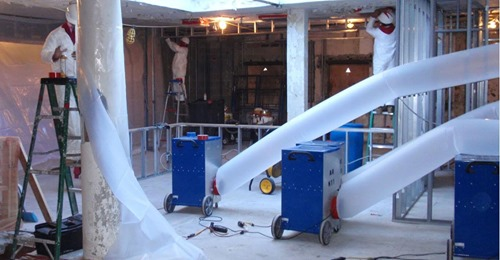Why Professional Detection Is Key in Managing Hidden Mould

Why Is Professional Detection Important for Hidden Mould?
Detecting hidden mould in a building is a complex task that often requires professional expertise. Unlike surface mould, which is visible and relatively easy to identify, hidden mould can grow in places that are not immediately visible, such as behind walls, under floors, or within ceiling cavities. This makes it difficult to detect without specialised equipment and knowledge.
Professional detection is important because it allows for accurate identification of the presence and extent of hidden mould. Without proper detection, mould can continue to grow and spread, leading to more extensive damage and increasing the health risks for the occupants.
What Tools Do Professionals Use to Detect Hidden Mould?
Professionals use a variety of tools and techniques to detect hidden mould. Some of the most commonly used tools include:
- Moisture metres: These devices measure the moisture content in building materials. Since mould requires moisture to grow, areas with high moisture levels are more likely to have hidden mould.
- Infrared cameras: Infrared cameras can detect temperature variations in building materials, which can indicate the presence of moisture and, potentially, hidden mould.
- Air quality tests: Air quality tests measure the concentration of mould spores in the air. High levels of mould spores can indicate the presence of hidden mould.
- Borescopes: Borescopes are small cameras that can be inserted into walls or other hard-to-reach areas to visually inspect for mould.
These tools allow professionals to accurately detect hidden mould, even in areas that are not easily accessible. This ensures that all traces of mould are identified and can be effectively treated.
How Does Professional Detection Protect Your Health and Property?
Professional detection of hidden mould is crucial for protecting both your health and your property. By accurately identifying the presence of hidden mould, professionals can ensure that all affected areas are treated and that the mould is completely removed. This helps prevent the health risks associated with mould exposure, such as respiratory issues, allergic reactions, and long-term lung damage.
In addition to protecting your health, professional detection also helps protect your property from the structural damage caused by hidden mould. By identifying mould early, professionals can prevent it from spreading and causing more extensive damage to building materials. This can save you from costly repairs and help maintain the value of your property.
What Should You Expect from a Professional Mould Inspection?
A professional mould inspection typically involves a thorough assessment of the property to identify any areas where mould may be present. The inspection process may include:
- Visual inspection: The inspector will visually examine the property for any signs of mould, water damage, or moisture problems.
- Moisture testing: The inspector will use moisture metres to measure the moisture content in building materials and identify areas that may be at risk for mould growth.
- Air quality testing: The inspector may conduct air quality tests to measure the concentration of mould spores in the air.
- Infrared scanning: The inspector may use infrared cameras to detect temperature variations that could indicate the presence of moisture and hidden mould.
- Sampling: In some cases, the inspector may take samples of mould or building materials to be analysed in a laboratory.
After the inspection, the professional will provide a detailed report outlining the findings and recommending any necessary remediation steps. This report will help you understand the extent of the mould problem and what needs to be done to address it.
How Can Professional Detection Help Prevent Future Mould Problems?
Professional detection not only helps identify and treat existing mould problems but can also help prevent future issues. By identifying the underlying causes of mould growth, such as leaks, poor ventilation, or high humidity levels, professionals can recommend solutions to prevent mould from returning.
For example, if high humidity is contributing to mould growth, the professional may recommend installing a dehumidifier or improving ventilation in the affected areas. If water leaks are identified, repairing the leaks promptly can prevent moisture from accumulating and creating a breeding ground for mould.
In summary, professional detection is key to managing hidden mould in Australian buildings and structural damage. By ensuring that all traces of mould are accurately identified and treated, professional detection helps protect your health, your property, and your peace of mind.

